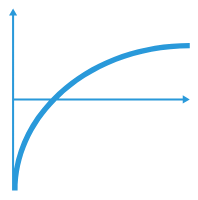Master exponents and logarithms with this comprehensive blog post. Learn their fundamentals, properties, and practical applications. Simplify expressions, solve equations, and model exponential growth. Enhance your problem-solving skills and deepen your understanding of math.
Introduction
Exponents and logarithms are fundamental mathematical concepts that play a crucial role in various fields, from science and engineering to finance and computer science. Understanding and harnessing the power of exponents and logarithms can significantly enhance your mathematical prowess and problem-solving abilities. In this comprehensive blog post, we will delve into the world of exponents and logarithms, exploring their definitions, properties, and practical applications. Whether you’re a student, professional, or simply curious about numbers, this guide will provide you with the knowledge and tools to master exponents and logarithms.

Check Out Various Math Calculators
Understanding Exponents
Introduction to Exponents
Exponents are shorthand notations used to represent repeated multiplication of a number by itself. For example, 3^2 represents 3 multiplied by itself, resulting in 9. Exponents are written as a superscript to the right of the base number. This section will provide a clear definition of exponents and introduce the basic terminology and notation used in exponentiation.
Laws of Exponents
Understanding the laws of exponents is essential for simplifying and manipulating expressions involving exponents. This subsection will cover important properties, including the multiplication and division properties of exponents. For instance, when multiplying two numbers with the same base, you add their exponents. Similarly, dividing two numbers with the same base involves subtracting the exponents. The power of a power and power of a product rules will also be explained, along with how to handle zero and negative exponents and their significance in mathematical expressions.
Scientific Notation
Scientific notation utilizes exponents to represent extremely large or tiny numbers. This notation is commonly used in scientific and engineering fields to represent numbers that are too large or too small to be conveniently written in standard decimal form. This subsection will explain how scientific notation works, including how to convert numbers between scientific notation and decimal form. Examples will be provided to illustrate the use of scientific notation in real-world scenarios.
Understanding Logarithms
Introduction to Logarithms
Logarithms are the inverse operation of exponentiation and provide a way to solve for unknown exponents. This section will introduce the concept of logarithms, their notation, and how they are used to represent the relationship between exponents and bases. The definition of logarithms as the exponent to which a base must be raised to obtain a given number will be explained.
Properties of Logarithms
Understanding the properties of logarithms is crucial for simplifying and manipulating logarithmic expressions. This subsection will cover important properties, such as the product rule, quotient rule, and power rule of logarithms. These rules allow for the simplification of complex logarithmic expressions and help in solving logarithmic equations.
Applications of Logarithms
Logarithms have numerous practical applications in various fields. This subsection will explore some of the common applications of logarithms, including their use in measuring the intensity of sound and earthquakes (decibels and the Richter scale), population growth modeling (the logistic equation), and compound interest calculations (the compound interest formula). Real-world examples will be provided to illustrate how logarithms are used to solve problems and make predictions.
Check Out Our Online Calculators and Tools
Exponents and Logarithms: Working Together
Exponential Growth and Decay
Exponential growth and decay are prevalent occurrences observed in various domains, including population dynamics, radioactive decay, and financial investments. This section will explain how exponents and logarithms work together to model and analyze exponential growth and decay processes. Examples will be provided to demonstrate how to use exponential and logarithmic functions to solve problems related to growth and decay.
Solving Exponential and Logarithmic Equations
Solving equations involving exponents and logarithms requires a good understanding of their properties and manipulation techniques. This subsection will provide strategies and step-by-step procedures for solving various types of exponential and logarithmic equations. Examples will be included to illustrate the problem-solving process.

Logarithmic Scales
Logarithmic scales are used to represent large ranges of values compactly and allow for easy visualization of data. This subsection will explore logarithmic scales, such as the Richter scale for measuring earthquake magnitudes and the pH scale for measuring acidity. The advantages and applications of logarithmic scales will be discussed, and examples will be given to demonstrate their usefulness in different contexts.
Check Out Fraction to Decimal Calculator
Summary
Exponents and logarithms are powerful mathematical tools with diverse applications in various fields. Mastering these concepts is essential for understanding complex mathematical relationships, solving equations, and making predictions. In this blog post, we have explored the foundations of exponents and logarithms, their properties, and practical applications. By understanding the laws of exponents, scientific notation, logarithmic properties, and their applications, you can enhance your problem-solving abilities and gain a deeper appreciation for the power of numbers. Whether you’re a student, professional, or simply interested in mathematics, embracing exponents and logarithms will unlock new possibilities and broaden your mathematical horizons.
